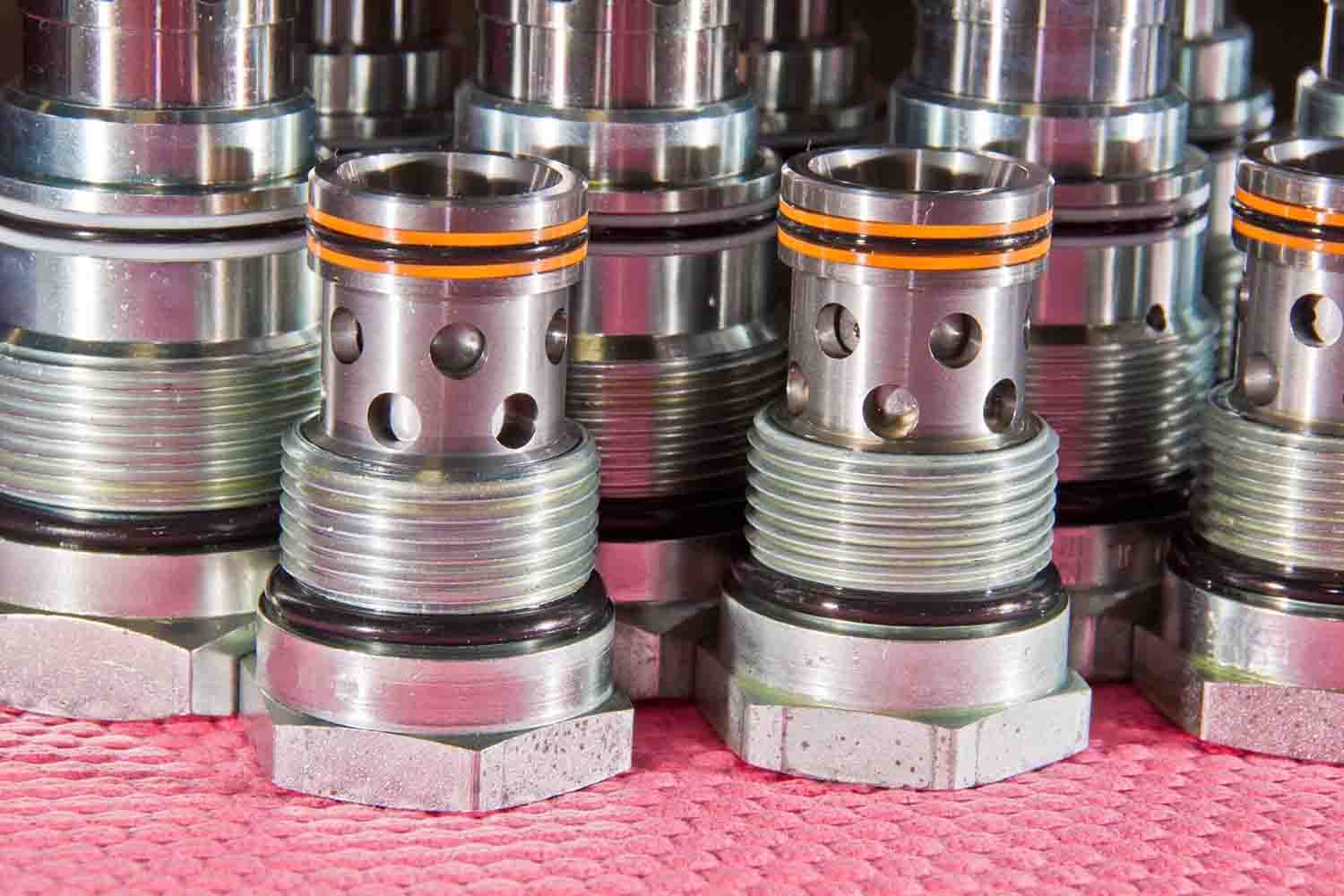
Some of the largest-scale construction and manufacturing projects in the world depend on the smallest components. Without a leak-free connection, hydraulic and pneumatic machinery would not be able to maintain the pressure necessary to consistently generate the required power to perform large tasks.
Maximizing system integrity is a matter of selecting the correct fittings for your specific system. To prevent leakage and resist contamination, O-Ring Boss (ORB) fittings play a critical role. Machinery must be fitted with the correct-sized ORB fitting, which requires a basic understanding of dimensions and thread sizes.
In this blog post, we’ll help you identify O-Ring Boss port dimensions and match thread sizes to ensure your machinery operates at maximum capacity.
What Is an O-Ring Boss Port?
There can be several types of fittings in a fluid power system that are kept in place to minimize pressure loss, and an O-Ring Boss port is one common type used in high-pressure applications. ORB ports are straight-thread, sealed connections used in high-pressure hydraulic systems. Unlike tapered thread fittings, ORB fittings use a mechanical seal, created by compressing an O-ring between the fitting and the port face, to prevent leaks.
A “boss” (meaning enlarged) port in the machinery contains female threading and can be joined to a pipe or other external element that has matching male threads. When the two components are attached with an O-ring in between them, the added compression makes for a far tighter and more secure seal than would otherwise be possible. This type of fitting is ideal for high-pressure environments because the sealing happens at the face and not in the threads.
Consider the Needs of the System
The first step in selecting the proper ORB fittings is to determine the specific needs of the machinery itself. What materials will be used in its construction? Answering this will depend on the types of stresses the machinery will be subjected to. For example, a system that is built to withstand vast amounts of pressure will likely require steel fittings. On the other hand, a system that maintains a lower pressure but is subjected to corrosive chemicals may need fittings that are made from brass. Check with the manufacturer for chemical compatibility.
Identifying ORB Dimensions
Maintaining the proper seal between the separate elements of the system is a matter of selecting the correct sizes during the initial installation process. To do so, it’s necessary for operators to properly identify the ORB dimensions before attempting to connect any new parts to the system. The technical specifications, such as the size of the tubing itself, are usually marked on the components by the manufacturer.
Selecting an ORB of the right dimensions is also a matter of matching it to the technical limitations of the machinery itself. For example, every type of fluid power mechanism has differing levels of pressure that it produces. It’s important to match the pressure rating of the O-Ring Boss fittings to the maximum possible pressure of the machinery.
Matching Thread Sizes
Finally, to create an effective seal, it’s critical that the threads of both ends are properly fitted to one another. To ensure that this is the case, operators should measure thread sizes as necessary. There are different types of threads that may be used in ORB fittings. These are identified by dash size (which measures the interior diameter of the fitting). You can match the dash ID of the fitting to the specifications of the machinery using a thread-size chart, such as the Parker Hannifin SAE J1926 thread size chart.
If you are unsure about the fitting sizes that you’ll need, there are several tools you can purchase to accurately measure them. A thread pitch gauge can determine the size of the spacing between the threads. This is a type of measuring device that works by placing a metal leaf between the threads on your fitting. Once a matching leaf is found, you will know the exact thread size, which will allow you to select the correct fitting.
You should also match the length of the fitting, which can be done with an ordinary ruler. Ensure the ORB fitting is the correct length for its attachment. A gap could allow leaks.
Ensuring a Perfect Fit, Every Time
To ensure that the fittings in your machinery are appropriately sized every single time, you can rely on our expert team to find the part made for your task. At Aberdeen Dynamics, our specialty is in the design and integration of bespoke machinery components that match our clients’ exact specifications. Contact us to discuss your project, and let us design a fluid power system that will maximize the efficiency and longevity of your machinery and improve the productivity of your operation.